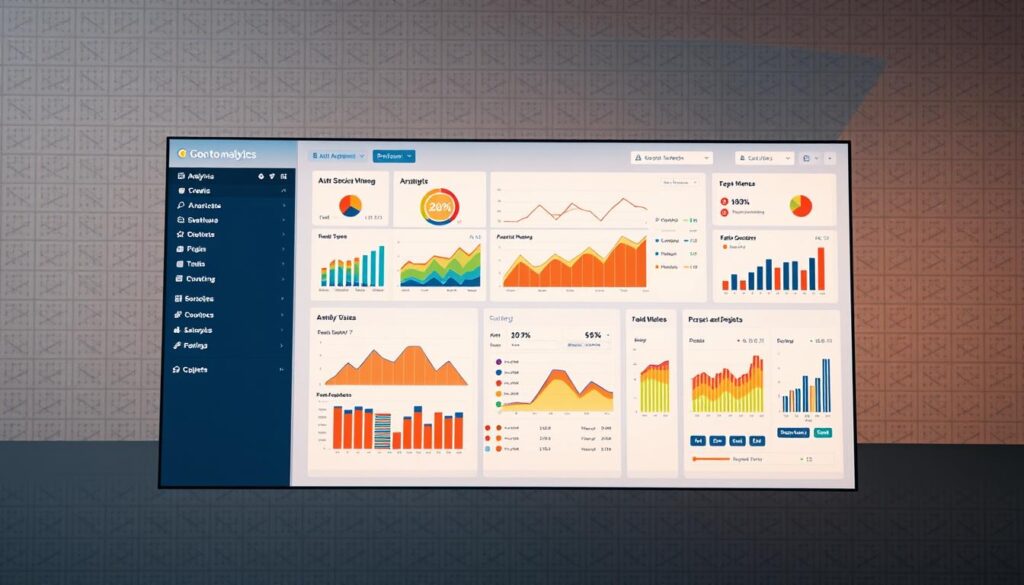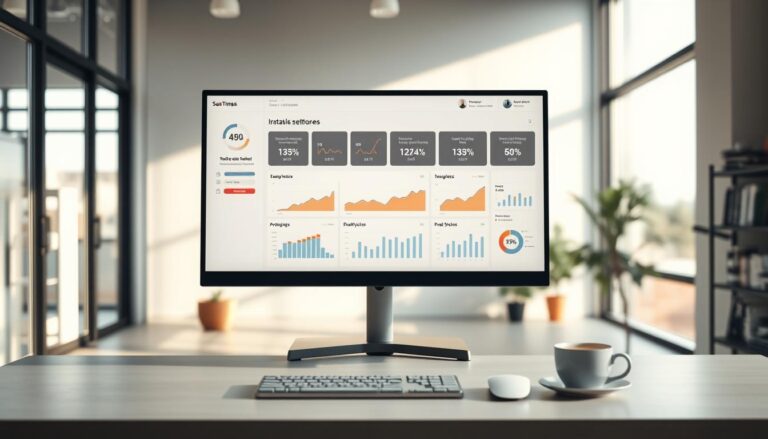In today’s competitive landscape, data-driven decisions separate thriving businesses from stagnant ones. Google Analytics stands as the backbone for companies aiming to refine their digital strategies and validate market assumptions. By transforming raw metrics into actionable insights, this platform empowers teams to optimize campaigns, track user engagement, and measure the true impact of their efforts.
For marketers and analysts, mastering this tool begins with understanding its core functions. The system tracks everything from conversion paths to audience demographics, creating a clear picture of how users interact with websites or apps. These insights help teams identify high-performing channels, prioritize resources, and align tactics with broader growth objectives.
Integration with other tools further enhances its value. When combined with CRM systems—like those focused on understanding your target audience—businesses gain a unified view of customer journeys. This synergy supports smarter decision-making, from acquisition campaigns to retention strategies.
Effective implementation starts with defining clear goals. Whether tracking specific events or measuring revenue streams, structured setup ensures every data point serves a purpose. Advanced reporting features then turn complexity into clarity, revealing which initiatives deliver the strongest returns.
Key Takeaways
- Google Analytics provides foundational insights for validating market strategies and optimizing campaigns.
- Tracking user behavior patterns helps businesses identify high-impact engagement opportunities.
- Integration with CRM systems creates a holistic view of customer interactions.
- Clear objective-setting ensures collected data directly supports business goals.
- Advanced reports simplify complex metrics into actionable recommendations.
Setting Up Your Google Analytics Property
A robust analytics foundation begins with precise technical configuration. Proper setup ensures every interaction—from page views to complex transactions—feeds into a unified measurement framework. This process transforms raw numbers into strategic assets.

Creating a GA4 Property & Data Streams
Start by establishing a GA4 property in your account. This next-generation platform replaces outdated tracking models with event-based data collection. Add separate streams for websites and mobile apps to capture cross-platform behavior patterns.
Implementing Events & Conversion Tracking
Define core user actions using event parameters. Track form submissions, video engagement, and custom interactions like PDF downloads. Mark critical events as conversions to measure outcomes impacting business goals.
Activating Google Signals & Advanced Data Features
Enable cross-device insights through Google Signals. This feature connects anonymous user data across sessions while maintaining privacy compliance. Combine it with User-ID implementation to map multi-touchpoint journeys accurately.
Advanced configurations include:
- Server-to-server tracking for backend transactions
- CRM data imports for offline activity correlation
- Custom audience triggers based on behavioral thresholds
Integrate tools like Google Tag Manager to streamline code deployment. This reduces reliance on developers while maintaining precise measurement controls across all digital properties.
go to market google analytics: Strategy Setup & Data Collection
Effective strategy execution demands more than basic tracking. Teams must bridge raw data collection with strategic decision-making processes. This alignment turns numbers into narratives that drive measurable growth.

Defining Key Business Actions with Analytics
Prioritize tracking actions that reflect real business value. For example:
| Objective | Key Action | Measurement |
|---|---|---|
| Lead Generation | Form Submissions | Conversion Rate |
| Product Adoption | Feature Usage | Session Duration |
| Customer Retention | Account Logins | Repeat Visits |
Custom conversion definitions let teams track industry-specific milestones. A SaaS company might monitor free trial sign-ups, while retailers focus on cart abandonments.
Using Data Integration for Improved Insights
Combine behavioral data with external sources for full visibility. Upload CRM records to analyze how offline interactions influence online behavior patterns.
“Integrated analytics reveal hidden connections between marketing channels and customer lifetime value.”
Roll-up properties simplify multi-brand reporting. Enterprises can maintain separate datasets for regional divisions while aggregating key metrics at corporate levels.
Integrating Advertising & Tag Management with Google Analytics
Bridging the gap between ad performance and user behavior analytics elevates marketing ROI. Unified systems allow teams to track campaigns from initial click to final conversion while maintaining data accuracy. This synergy turns scattered metrics into strategic assets.
Linking Your Ads & Enhancing Campaigns
Connecting advertising platforms with analytics creates closed-loop reporting. Marketers gain visibility into which ads drive conversions, not just clicks. One retail brand increased repeat purchases by 37% after implementing cross-platform tracking.
“Attribution modeling through integrated systems reveals which touchpoints actually move the needle on sales.”
Leveraging Tag Manager for Deployment
Modern tag management eliminates coding bottlenecks. Teams can:
- Deploy tracking scripts in minutes vs. days
- Test configurations before going live
- Maintain compliance through centralized controls
This approach reduces errors while accelerating campaign launch timelines.
Optimizing Reporting & Dashboards
Custom reports transform numbers into narratives. A financial services company automated 80% of their reporting using:
- API-driven data pipelines
- Dynamic UTM parameter tracking
- Real-time performance alerts
These tools help teams focus on insights rather than spreadsheet management.
Conclusion
Building a data-driven strategy requires more than collecting numbers—it demands turning insights into action. Platforms like Google Analytics, combined with tools such as Google Tag Manager, transform raw metrics into clear pathways for growth. Every click, scroll, and conversion tells a story about your website’s performance.
These systems reveal which features engage users and where opportunities get missed. Pair behavioral data with CRM insights—like those for audience analysis—to create a holistic view of customer journeys. This approach bridges gaps between marketing efforts and real-world outcomes.
Continuous refinement separates successful strategies from static reports. Teams that regularly test hypotheses and update tracking configurations adapt quickly to shifting trends. When data flows seamlessly between tools, it becomes a strategic asset—not just a dashboard metric.
FAQ
How does GA4 improve measurement for cross-platform strategies?
GA4’s event-based model tracks user interactions across websites and apps in one property, offering unified reporting. Features like enhanced measurement automatically capture scrolls, video engagement, and file downloads without custom code.
What’s the advantage of linking Google Ads to Analytics?
Integration enables bid optimization using Analytics audience data. Marketers gain visibility into which campaigns drive conversions beyond last-click attribution, improving budget allocation and ad relevance scores.
Can Google Tag Manager replace developer-dependent tracking setups?
Yes. The platform lets teams deploy tags for analytics, ads, and third-party tools without coding. Version control and preview modes ensure accurate data collection while accelerating implementation timelines by up to 70%.
How long does GA4 retain user-level data?
By default, GA4 stores event data for 2 months. Businesses can extend this to 14 months via property settings. For indefinite retention, export raw data to BigQuery using the native integration.
What role do subproperties play in enterprise analytics?
Subproperties filter data streams for specific departments or regions while maintaining source integrity. Teams can apply distinct access controls and reporting views without creating separate accounts—ideal for multinational organizations.
Does GA4 support server-side tagging for privacy compliance?
Yes. Server-side tagging via Google Tag Manager reduces client-side scripts, minimizing data exposure. This setup helps businesses adhere to GDPR and CCPA by controlling third-party cookie usage and PII collection.



